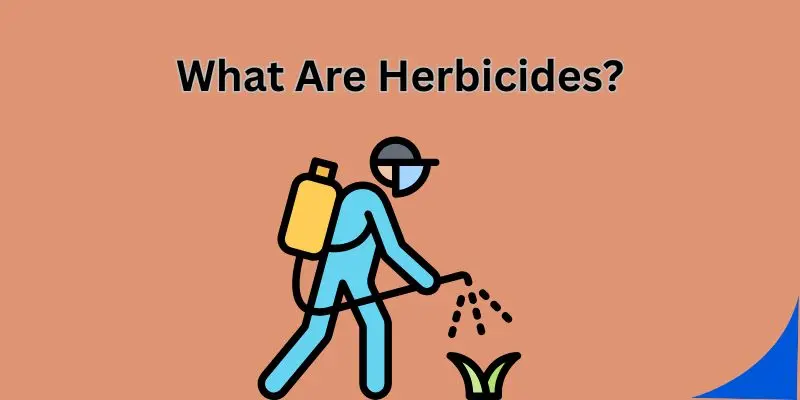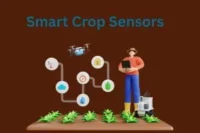Herbicide Use and Safety: Protecting Crops, Lives, and Land
Published: 23 May 2025
With so many types of herbicides on the market and conflicting opinions on how to use them safely, it’s hard to know what’s right anymore. Should you spray before the weeds appear or after? Is it okay to use the same product every season? And what about the health warnings—are they exaggerated or something to be seriously worried about? For many farmers and landowners, using herbicides feels necessary, but not always fully understood. This article aims to clear the confusion, offering guidance on using herbicides effectively—without risking your health, your crops, or the environment.
So, guys, without wasting time, let’s jump into the article to learn the Herbicide Use and Safety: Protecting Crops, Lives, and Land
What Are Herbicides?
The safe and proper use of herbicides is essential not only for controlling weeds effectively but also for protecting human health, crop productivity, and environmental balance. While herbicides help farmers reduce labor and increase yields, improper application can lead to soil degradation, water contamination, and health risks for both users and nearby communities.
- Chemicals used to control or kill unwanted plants (weeds)
- Help protect crops from weed competition
- Can be selective or non-selective
- Applied before or after weed emergence
- Used in agriculture, gardening, and landscaping
- Require proper handling for safety
- Available in liquid, granule, or spray forms
- Often regulated for environmental protection

Why Herbicide Use and Safety Matters:
- Ensures Effective Weed Control
Proper usage helps eliminate weeds without damaging crops. - Protects Human Health
Safe handling prevents skin irritation, breathing problems, and long-term health risks. - Preserves Soil Quality
Avoids chemical buildup that can harm soil microbes and reduce fertility. - Prevents Water Contamination
Stops harmful chemicals from seeping into groundwater and rivers. - Safeguards Nearby Wildlife and Ecosystems
Minimizes exposure of non-target species to toxic substances. - Supports Sustainable Farming
Encourages responsible agricultural practices that protect future generations.
Why Herbicide Safety Is Crucial
- Health Risks: Improper use can cause skin irritation, respiratory issues, or long-term illness.
- Environmental Harm: Overuse can lead to soil degradation, water pollution, and harm to non-target plants and animals.
- Legal and Ethical Responsibility: Farmers and users must follow safety laws and protect surrounding communities.
- Emotional appeal: “Every spray affects more than just the weeds.”
Types of Herbicides and Their Uses
- Pre-emergent Herbicides: Applied before weeds sprout.
- Post-emergent Herbicides: Used after weeds have grown.
- Selective Herbicides: Kill only specific weeds without harming crops.
- Non-selective Herbicides: Kill all plant life in the area.
- Include brief mentions of common active ingredients.
How to Use Herbicides Safely
- Read the Label Thoroughly before use.
- Wear Protective Gear (gloves, goggles, long sleeves).
- Measure and Mix Properly using clean equipment.
- Spray in Ideal Conditions (low wind, no rain forecast).
- Clean Up Carefully and wash hands and clothes.
- Emotional message: “You’re not just applying a product—you’re protecting everything that grows around you.”
Common Mistakes and How to Avoid Them
- Spraying during wind or rain
- Overapplying or mixing wrong concentrations
- Not using protective equipment
- Ignoring re-entry periods or pre-harvest intervals
- Using expired or banned herbicides
Effects of Unsafe Herbicide Use
- On Humans: Allergies, skin burns, respiratory issues, long-term toxicity.
- On Soil: Reduced fertility, microbial imbalance, chemical buildup.
- On Water Bodies: Runoff causes contamination, harming aquatic life.
- On Wildlife: Non-target insects, birds, and mammals can suffer.
- Emotional line: “What you apply in one field can travel miles through water, wind, and life.”
Eco-Friendly and Safer Alternatives
- Use of bioherbicides (natural plant-based weed killers)
- Mechanical weeding (tools and manual labor)
- Cover cropping to outcompete weeds
- Integrated Weed Management (IWM) combining chemical and natural methods
Legal Guidelines and Farmer Responsibility
- Summary of local/national laws (e.g., registration, banned chemicals)
- Importance of record-keeping and proper disposal
- Certification and training programs for safe use
- Ethical angle: “The safest hands are informed hands.”
FAQs about Herbicide
Here are some of the most frequently asked questions about Herbicide Use and Safety: Protecting Crops, Lives, and Land
Selective herbicides kill only certain types of plants, like weeds, without harming crops. Non-selective herbicides kill most plants they touch, so they’re usually used in places where no plants should grow.
No, not all herbicides work on every weed. Some are made to target specific kinds, so it’s important to choose the right one based on the weeds you’re dealing with.
Some herbicides can be harmful if not used properly. Always read the label and follow safety instructions to protect yourself, others, and animals.
Pre-emergent herbicides stop weeds from growing before they even sprout. You use them on soil to prevent weed seeds from developing into plants.
Post-emergent herbicides are used after weeds have already grown. They’re sprayed directly onto the unwanted plants to kill them.
11. Conclusion
“Herbicide Use and Safety: Protecting Crops, Lives, and Land.” Include key information about the types of herbicides, their proper application, and safety precautions. Then, highlight the importance of understanding these types in a concise paragraph, explaining how this knowledge helps protect crop yields, ensure human safety, and preserve environmental health

- Be Respectful
- Stay Relevant
- Stay Positive
- True Feedback
- Encourage Discussion
- Avoid Spamming
- No Fake News
- Don't Copy-Paste
- No Personal Attacks

- Be Respectful
- Stay Relevant
- Stay Positive
- True Feedback
- Encourage Discussion
- Avoid Spamming
- No Fake News
- Don't Copy-Paste
- No Personal Attacks





